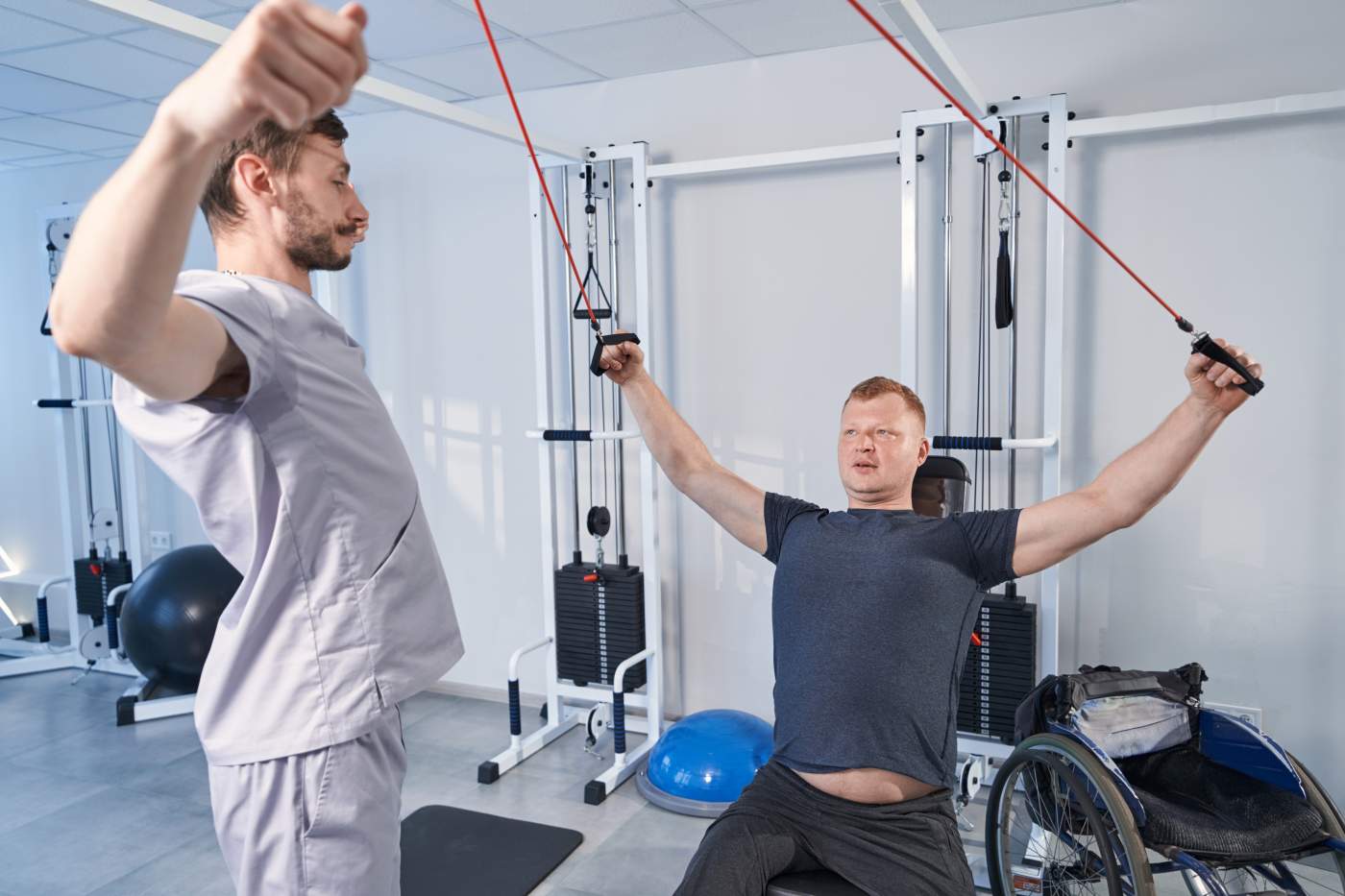In performance rehab, it’s important to fix the reasons for injuries and boost athletic abilities. Most people concentrate on getting stronger and fitter while healing, but they often forget about something equally important: mobility training. In this guide, we’ll discuss how crucial mobility training is during rehab and share many tips and methods to help you add it to your recovery plan.
Understanding Mobility Training
Mobility training is vital for rehab because it helps you move better. Unlike flexibility, which is about muscle length, mobility focuses on freely and actively moving your joints and muscles. It’s essential for athletes and anyone healing from injuries, as it improves how you move and lowers the risk of future problems.
Mobility Assessment
Before starting mobility training, you must check how well you can move. This helps you understand where you’re starting from and see how you’re doing as you go along. You can measure your mobility differently, like checking how your joints move or doing simple tests. It’s a good idea to talk to a healthcare or fitness expert for a full checkup that’s just for you.
Mobility Training Techniques
1. Dynamic Stretching
Dynamic stretching means gently moving your muscles and joints in a controlled way. This helps blood flow, makes joints work better, and prepares your body for action. Try leg swings, arm circles, and hip rotations as part of your warm-up.
2. Foam Rolling
Foam rolling, or self-massage, is a way to ease muscle knots and muscle tension. It helps improve blood flow and makes your muscles more flexible. Try using a foam roller before and after you work out.
3. Joint Mobility Exercises
Joint mobility exercises focus on enhancing the movement of specific joints. These exercises are particularly beneficial for individuals recovering from joint-related injuries. Examples include wrist circles, ankle circles, and shoulder rotations.
4. Yoga and Mobility-Focused Yoga Poses
Yoga mixes stretching, strength, and moving better. Doing yoga during your rehab can help. Poses like Downward-Facing Dog, Cat-Cow, and Child’s Pose can make you move better and feel less stiff.
Tailoring Mobility Training to Specific Injuries
Different injuries require customized mobility training. Here are some ideas for incorporating mobility exercises into rehab for common injuries:
1. Ankle Sprains
For ankle sprains, focus on mobility exercises that gently increase ankle range of motion. Ankle alphabet exercises, calf stretches, and ankle circles can be useful.
2. Knee Injuries
Knee injuries often benefit from hip mobility exercises, as the hips play a significant role in knee stability. Include exercises like hip flexor, leg swings, and seated hamstring stretches.
3. Shoulder Injuries
Shoulder mobility is crucial for rehabilitation. Gentle shoulder circles, arm swings, and shoulder stretches can help regain range of motion and reduce pain.
Talk to a healthcare pro or physical therapist before you start any mobility exercises. They’ll help you pick the right ones for your injury and what you want to achieve in rehab.
Mobility Training Progressions
Progressive mobility training is the key to improving mobility over time. Consider these ideas for gradually increasing the intensity and complexity of your mobility training:
1. Increase Range of Motion
As you become more comfortable with an exercise, gradually aim for a greater range of motion. For example, if you’re performing leg swings, try to swing your leg higher with each repetition.
2. Add Resistance
Adding resistance can make mobility exercises more challenging. Ankle weights, resistance bands, or even light dumbbells can increase the intensity of exercises like leg lifts or arm circles.
3. Incorporate Mobility Tools
Utilize tools like yoga blocks, foam rollers, or mobility balls to deepen stretches and target specific areas of tightness or tension.
4. Use Props and Straps
Yoga props such as blocks and straps can assist in achieving deeper stretches and positions that may be difficult initially.
Combining Mobility and Strength Training
Integrating mobility exercises with strength training is a powerful approach for comprehensive performance rehab.
Here’s how to combine the two effectively:
1. Dynamic Warm-Up
Start your strength training sessions with a dynamic warm-up with mobility exercises. This prepares your muscles and joints for the upcoming load and reduces the risk of injury.
2. Supersets
Pair mobility exercises with strength exercises in a superset format. For example, perform a set of squats followed by a set of hip flexor stretches. This approach maximizes the use of your time while addressing both mobility and strength.
3. Cooldown Routine
Conclude your strength training sessions with a cooldown routine that includes static stretches and additional mobility exercises to promote muscle recovery and improve flexibility.
By combining mobility and strength training, you create a well-rounded rehab routine that helps you recover from injuries and enhances your overall athletic performance.
Sample Mobility Training Routines
To get you started on your mobility training journey, here are three sample routines suitable for different situations:
1. Morning Mobility Routine
Start your day with a gentle morning mobility routine to awaken your body and prepare it for the day ahead. This routine may include basic joint rotations, neck stretches, and spinal twists.
2. Post-Workout Mobility Routine
After an intense workout, use a post-workout mobility routine to aid in muscle recovery and reduce post-exercise stiffness. Focus on stretches that target the muscle groups you worked during your workout.
3. Full-Body Mobility Routine
Perform a comprehensive full-body mobility routine on designated mobility training days. This routine should cover all major joints and muscle groups, improving balanced mobility.
For each routine, include step-by-step instructions and exercise demonstrations to help you perform the exercises correctly.
Precautions and Safety
While mobility training is beneficial, it’s essential to practice it safely. Here are some precautions and safety tips to keep in mind:
1. Proper Form
Maintain proper form during mobility exercises to avoid straining muscles or joints.
2. Avoid Overstretching
Gentle, controlled stretches are effective. Avoid pushing your body too hard, as this can lead to injury.
3. Listen to Your Body
If you experience pain beyond the usual discomfort of stretching, stop the exercise and consult a healthcare professional.
4. Gradual Progression
Progress gradually in intensity and duration to prevent overuse injuries.
5. Stay Hydrated
Adequate hydration supports muscle function and flexibility.
Benefits of Adding Mobility Training to Performance Rehab
Now that we’ve explored various aspects of mobility training, let’s delve into the numerous benefits of incorporating it into your performance rehab routine:
1. Enhanced Range of Motion
Mobility training improves joint mobility, allowing for a broader range of motion, essential for optimal athletic performance.
2. Injury Prevention
Improved mobility reduces the risk of injuries by ensuring your body can move freely and absorb forces effectively.
3. Muscle Recovery
Mobility exercises aid in muscle recovery by promoting blood flow and reducing muscle soreness.
4. Balance and Symmetry
Addressing mobility imbalances between sides of the body can improve balance and symmetry, reducing the risk of overcompensation injuries.
5. Functional Movement
Mobility training enhances your ability to perform functional movements necessary for sports and daily activities.
Conclusion
Adding mobility training to your rehab is smart for athletes and anyone getting over injuries, as it helps your joints move better, lowers injury chances, and makes you move well. Check your mobility, use different exercises, focus on your injuries, and slowly make things harder to get better.
Stay safe, talk to healthcare or fitness experts when needed, and keep working on your rehab. Improving your mobility helps with recovery and makes you perform better and stay healthy.










